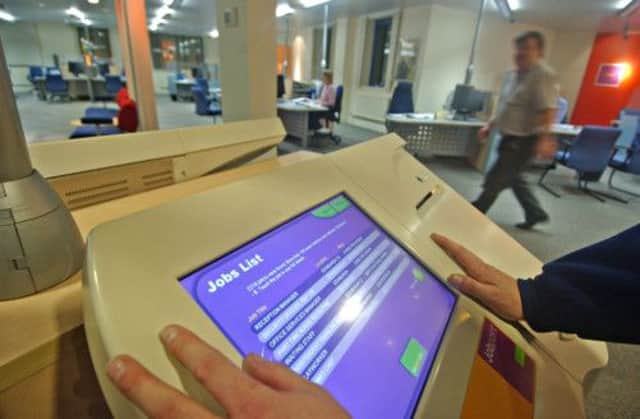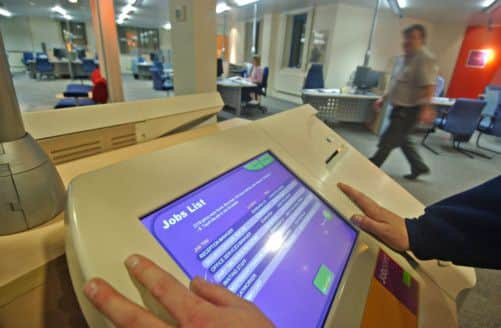Scottish unemployment falls with total less than UK


There are now 199,000 Scots out of work, with an unemployment rate of 7.3 per cent in Scotland.
However, there is a gloomier picture across the UK, where unemployment increased by 15,000 over the same period to 2.52 million.
Advertisement
Hide AdAdvertisement
Hide AdThe UK unemployment rate is now 0.5 per cent higher than that of Scotland at 7.8 per cent.


The number of people in work in Scotland also jumped by 54,000, the biggest rise since records began more than 20 years ago. There are now 2.52 million Scots in work.
The contrasting pictures north and south of the Border were seized on by First Minister Alex Salmond, who said: “Scotland is out-performing the UK with a higher employment rate and lower unemployment rate.
“And our youth employment rate is continuing to make encouraging progress with more young people in work and youth unemployment falling again.”
With the January to March figures showing 67,000 16- to 24-year-olds are out of work, the Scottish youth unemployment rate is now 16.6 per cent, lower than the rate for the UK as whole, which stands at 20.3 per cent.
The First Minister called on Chancellor George Osborne to use his spending review in June to “change his plans, accept his mistakes and learn the lesson that the key to economic growth is investment, not austerity”.
The figures did show a small rise in the number of Scots who are out of work and claiming jobseeker’s allowance. This was up by 100 from the March total to 136,800 for April.
But the number of Scots stuck on this benefit for more than two years has doubled – and trebled among young Scots, Labour warned.
Advertisement
Hide AdAdvertisement
Hide Ad“It is also very worrying that many of the jobs being created are part-time and temporary,” said Labour finance spokesman Ken Macintosh.
“The fall of 13,000 in full-time work over the past year and rise of 6,000 in temporary workers shows that people are underemployed and struggling to find permanent employment.
“This is a picture of stagnation in the labour market rather than progress and it demands a level of intervention from both governments that is simply not happening.”
While Scottish Secretary Michael Moore also welcomed the latest unemployment figures, he stressed the importance of the UK government maintaining its economic strategy.
Mr Moore added: “I am confident that the measures introduced to Parliament as part of the Queen’s Speech earlier this month such as supporting families with childcare costs, and taking 35,000 businesses in Scotland out of National Insurance contributions altogether, will continue to aid the economic recovery in Scotland.”
Lauren Paterson, of CBI Scotland, said Scotland’s labour market is “showing resilience” despite the harsh economic climate.
“The private sector is gradually regaining the confidence to hire, and all parties must do their utmost to ensure that this trend continues,” she said.